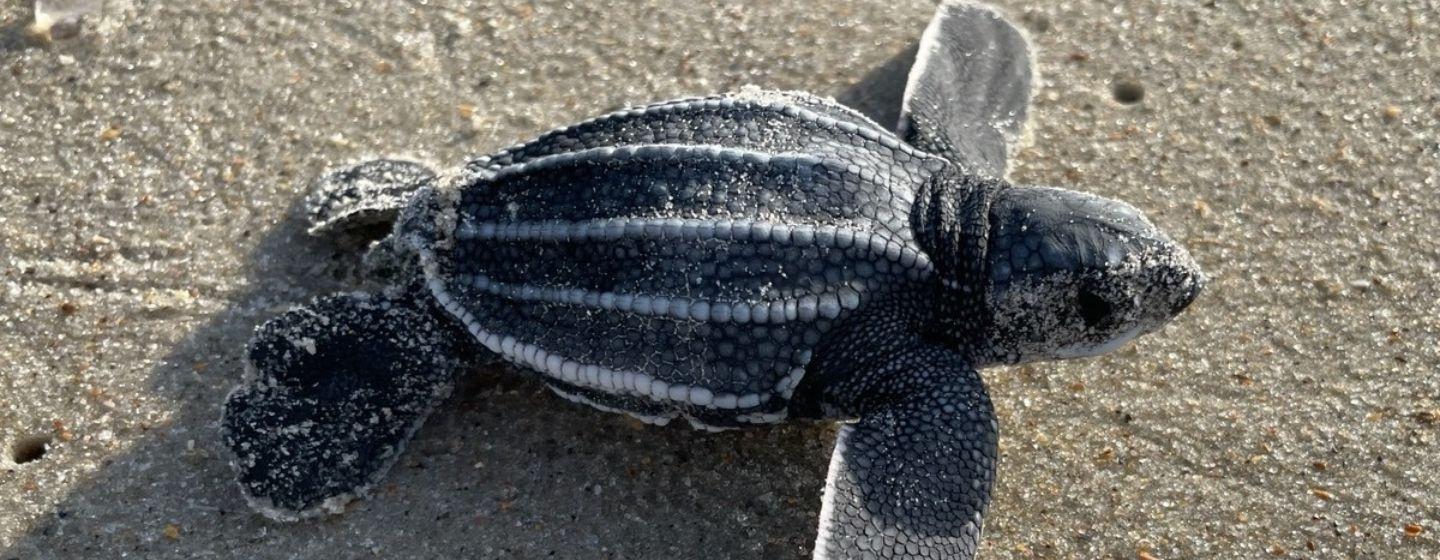Rare Leatherback Sea Turtles Hatch on Cape Hatteras National Seashore


Forgive the pun, but there’s a lot of “shellebrating” on Ocracoke Island, and there’s a good reason.
For the first time since 2007, leatherback sea turtle hatchlings have crawled down the beach to the sea. This is only the sixth time that a leatherback has nested on Cape Hatteras National Seashore since officials started keeping records in 2004.
The seashore protects three barrier islands in the Outer Banks: Bodie, Hatteras and Ocracoke Islands. Here’s where the previous leatherback nests were located:
2022: 1 nest on Hatteras Island
2012: 1 nest on Ocracoke Island
2009: 1 nest on Hatteras Island
2007: 1 nest on Ocracoke Island
2004: 1 nest on Hatteras Island
Seashore officials say the leatherback (Dermochelys coriacea) is the largest sea turtle in the world, with adults weighing in at 2,000 pounds and measuring up to 6.5 feet. The leatherback is on the endangered species list. According to NOAA (National Oceanic and Atmospheric Administration), it is estimated that their global population has declined over 40% in the past three generations.
According to data from seaturtle.org, five types of sea turtles have laid 111 nests on the Cape Hatteras National Seashore this season: 104 loggerhead, four green, two Kemp’s ridley and one leatherback.
The leatherback nest was spotted on Ocracoke Island in June, and seashore officials reported that a female turtle had laid 93 eggs in it. However, because the nest was at the high-tide line, park biologists relocated all the eggs to a safer spot on the beach.
Female leatherbacks nest every two to four years, and their nesting season runs from March to July. The incubation period for their eggs is 90 days, or about three months, after which hatchlings gradually emerge and trek to the ocean. The Ocracoke hatchlings are expected to empty the nest by mid-September.
Here’s the reality of the natural world for all types of sea turtles: under normal conditions, 10% of hatchlings are eaten by predators on the beach. Only about 25% of those that make it to the ocean survive the first few days in the water. Only 6% of those survive their first year. Now you can see why turtles lay so many eggs. https://www.noaa.gov/